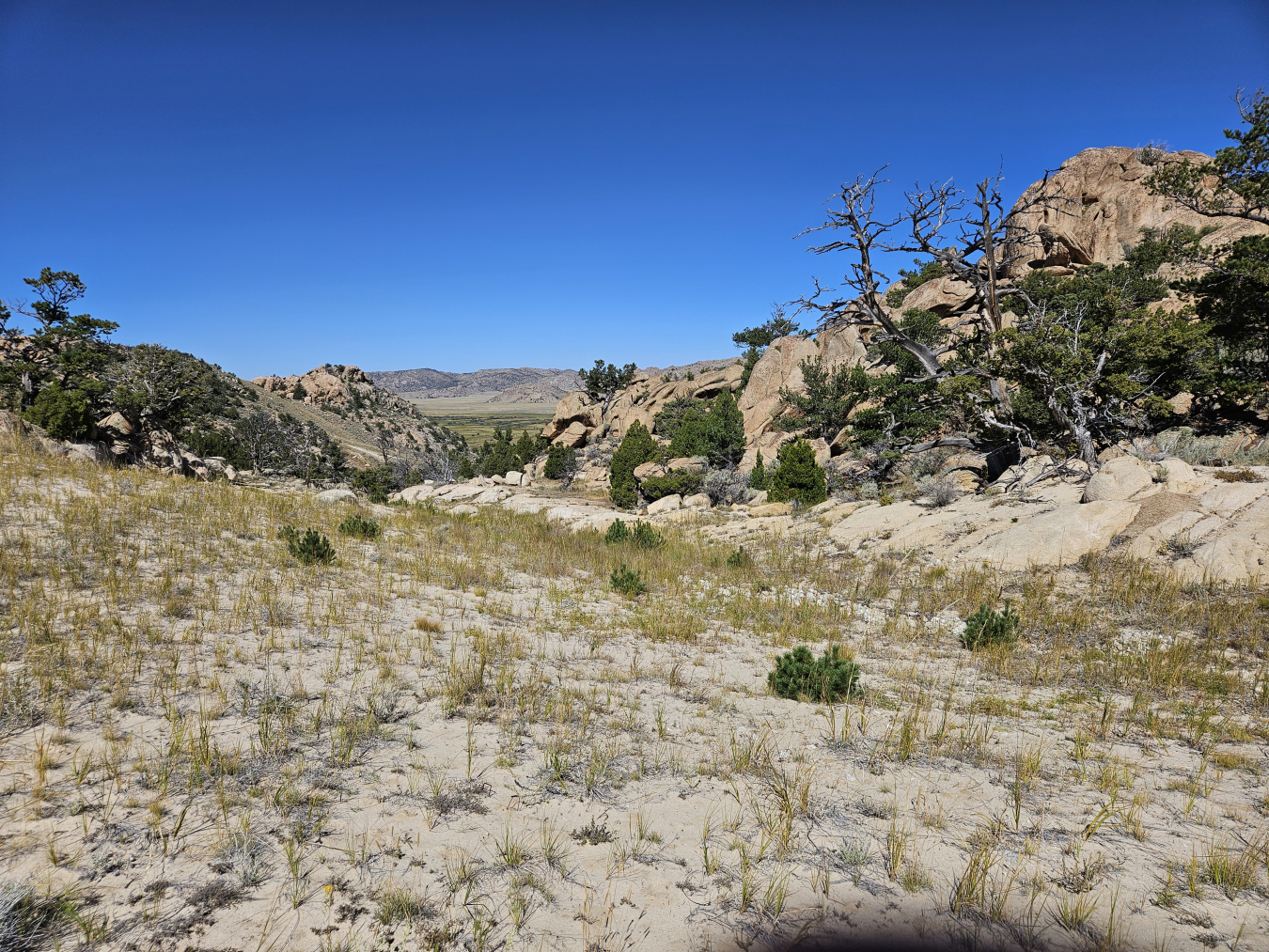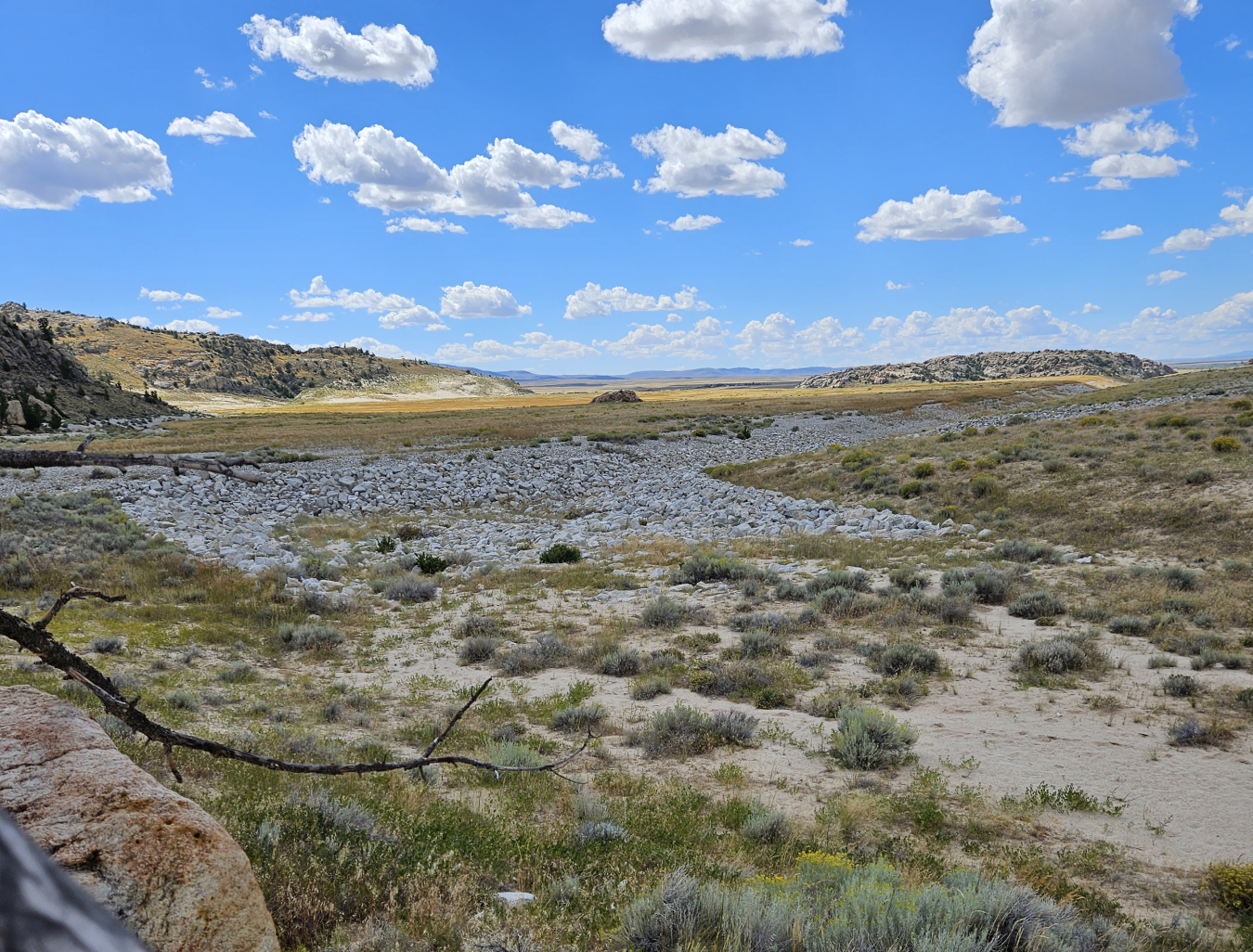LM will manage the Split Rock, Wyoming, Disposal Site under the Uranium Mill Tailings Radiation Control Act Title II
December 7, 2023The site of a former uranium mill in central Wyoming is the 102nd site to come under the U.S. Department of Energy Office of Legacy Management's long-term care.
The Split Rock, Wyoming, Disposal Site is in unincorporated Fremont County, about two miles northeast of Jeffrey City, Wyoming. LM will manage it as a Title II site under the Uranium Mill Tailings Radiation Control Act that Congress passed in 1978.
Title II applies to uranium mill sites licensed by the U.S. Nuclear Regulatory Commission and still active on or after Congress passed UMTRCA. Uranium mill tailings are primarily the sandy radioactive waste byproduct material from conventional uranium milling. Split Rock is the first UMTRCA Title II site to transfer to LM since 2010 and is now LM’s largest site at 5,431 acres.
Split Rock is the site of some unique historical features. It lies along the Oregon Trail, laid by trappers and fur traders between Missouri and Oregon from 1811-1840. Mormon pioneers came through the area in the 1840s after they left Illinois to migrate west. Later, Pony Express riders used the trail while hauling mail from Missouri to California from April 1860 to October 1861.
Western Nuclear, Inc. built and ran a uranium mill at the site from 1956 to 1981. At the mill’s peak operation, it processed 1,700 tons of uranium ore daily. Most of the ore came from open-pit mines in the Gas Hills district that was approximately 20 miles north of the mill site. Additional material came from the underground mines in the Crooks Gap area that was approximately 12 miles south of the mill site. In its 25 years, the mill processed about 7.7 million tons of ore. In 1981, the Split Rock mill went into standby mode because of less demand and lower uranium prices. Five years later the mill closed.
In 1988, WNI began cleaning up the site. To address present and future radiological hazards to human health and the environment, WNI put the radioactive materials in a specially designed disposal cell. Site restoration consisted of:
- Taking apart the mill.
- Crushing and burying uncontaminated materials underneath the former mill.
- Containing tailings and mill-related waste in an engineered disposal cell.
WNI deposited about 7.7 million tons of tailings, billions of gallons of process liquid waste, and 2,750 curies of radium-226 into three main tailings disposal areas used during the mill’s operational time. WNI put the contaminated tailings and debris in an aboveground, 265-acre, engineered disposal cell at the site. The disposal cell is at the base of a saddle between two granite ridges. The site’s remaining disturbed surface land was restored to native landscape.
WNI began treating and extracting contaminated groundwater at the site in 1990 to reach pre-milling contaminant levels. In 1999, WNI realized its work to restore the groundwater would not reduce contamination levels to pre-milling conditions, so WNI suggested concentration limits and restrictions to comply with groundwater protection standards and keep human health and the environment protected.
Cleaning up the surface area, storing the radioactive materials, and restricting access to groundwater addressed the risks contaminants posed at the site. As the new long-term custodian of the site, LM is responsible for inspections, groundwater monitoring and reporting, routine maintenance, and site record keeping.
“Many individuals working with federal and state agencies, and WNI, have contributed over years to monitor, maintain and transfer the site to DOE care,” said Site Manager Nicole Keller. “Now it’s DOE's turn to honor and continue that foundational work.”
Beneficial site reuse is also one of LM’s primary goals. To immediately support this goal, LM conveyed a haying and grazing agreement with a Wyoming rancher that uses parts of the Split Rock site as just one immediate beneficial reuse opportunity. LM is already in the process of exploring additional opportunities such as interpretative signage and kiosks that capitalize on the site’s unique history and place in our nation’s history.
Along with WNI, the Wyoming Department of Environmental Quality, the Bureau of Land Management, and the U.S. Nuclear Regulatory Commission worked together to transfer the site to LM.



